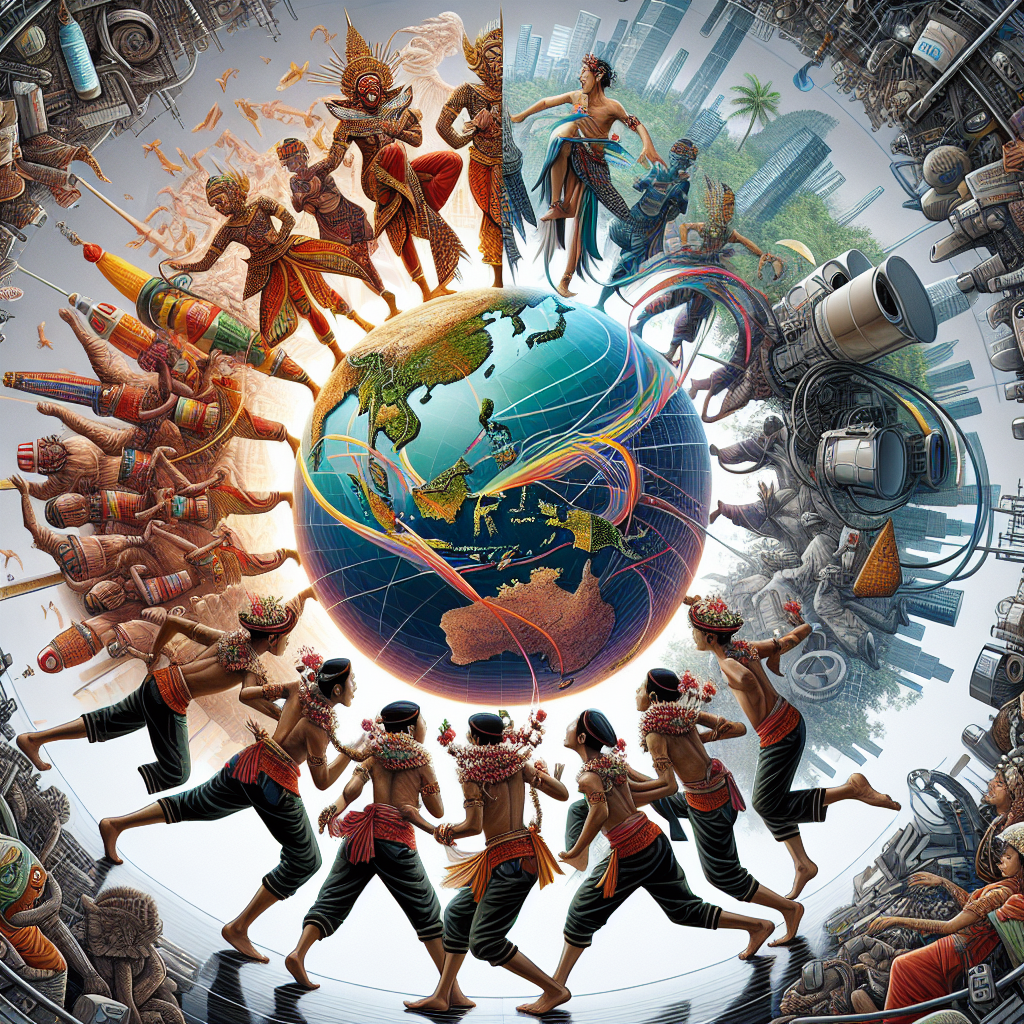-
Table of Contents
- The Impact of Globalization on Modern Dance in Indonesia
- Introduction
- Historical Context of Indonesian Dance
- The Emergence of Modern Dance in Indonesia
- Globalization and the Transformation of Indonesian Dance
- Influence of Western Dance Styles
- Integration of Global Music and Costumes
- The Role of Technology in Promoting Indonesian Modern Dance
- Challenges and Criticisms
- The Future of Modern Dance in Indonesia
- Conclusion
The Impact of Globalization on Modern Dance in Indonesia

Introduction
Globalization has had a profound impact on various aspects of Indonesian culture, including the realm of dance. Traditional Indonesian dance forms have evolved and transformed over time, influenced by global trends and the exchange of ideas and practices. This article explores the dampak (impact) of globalization on modern dance in Indonesia, examining how it has shaped the art form, brought new influences, and contributed to its growth and development.
Historical Context of Indonesian Dance
Indonesian dance has a rich history that dates back centuries. It is deeply rooted in the country’s diverse cultural heritage, with each region having its unique dance traditions. Traditional Indonesian dances are often performed in religious ceremonies, social events, and storytelling rituals. These dances are characterized by intricate movements, expressive gestures, and vibrant costumes.
The Emergence of Modern Dance in Indonesia
The emergence of modern dance in Indonesia can be traced back to the early 20th century when the country was under Dutch colonial rule. Western dance forms, such as ballet and contemporary dance, were introduced to Indonesian dancers through colonial institutions and cultural exchanges. This marked the beginning of a fusion between traditional Indonesian dance and Western dance styles.
Globalization and the Transformation of Indonesian Dance
Globalization has played a significant role in transforming Indonesian dance into a more contemporary and diverse art form. The increased connectivity and exchange of ideas between cultures have led to the incorporation of global influences into traditional dance practices. This fusion has given rise to new dance forms that blend traditional Indonesian movements with modern techniques.
Influence of Western Dance Styles
Western dance styles, particularly ballet and contemporary dance, have had a profound influence on modern dance in Indonesia. Indonesian dancers have embraced these styles and incorporated them into their performances, creating a unique blend of traditional and contemporary movements. This fusion has allowed for greater artistic expression and experimentation within the Indonesian dance scene.
Integration of Global Music and Costumes
Globalization has also brought new music styles and costumes to Indonesian modern dance. Traditional Indonesian music has been combined with global music genres, such as jazz, hip-hop, and electronic music, to create innovative soundscapes for dance performances. Similarly, costumes have evolved to incorporate elements from different cultures, resulting in visually stunning and culturally diverse attire.
The Role of Technology in Promoting Indonesian Modern Dance
Technology has played a crucial role in promoting Indonesian modern dance on a global scale. The advent of social media platforms and online video sharing platforms has allowed dancers to showcase their talent to a wider audience. Indonesian dance groups and individual dancers have gained international recognition through viral videos and online collaborations, further fueling the growth and popularity of modern dance in Indonesia.
Challenges and Criticisms
While globalization has brought numerous benefits to Indonesian modern dance, it has also faced challenges and criticisms. Some argue that the fusion of traditional and global influences has diluted the authenticity of Indonesian dance forms. There is a concern that the focus on commercial success and international recognition may overshadow the preservation of traditional dance practices.
The Future of Modern Dance in Indonesia
The future of modern dance in Indonesia is promising, with continued growth and innovation expected. As globalization continues to shape the world, Indonesian dancers will continue to explore new possibilities and push the boundaries of their art form. It is crucial, however, to strike a balance between embracing global influences and preserving the rich cultural heritage of traditional Indonesian dance.
Conclusion
Globalization has had a profound impact on modern dance in Indonesia, transforming it into a vibrant and diverse art form. The fusion of traditional Indonesian dance with global influences has brought new movements, music, and costumes to the forefront. Technology has played a crucial role in promoting Indonesian modern dance on a global scale. While challenges and criticisms exist, the future of modern dance in Indonesia looks promising, with continued growth and innovation expected. It is essential to strike a balance between embracing globalization and preserving the authenticity of traditional Indonesian dance.




